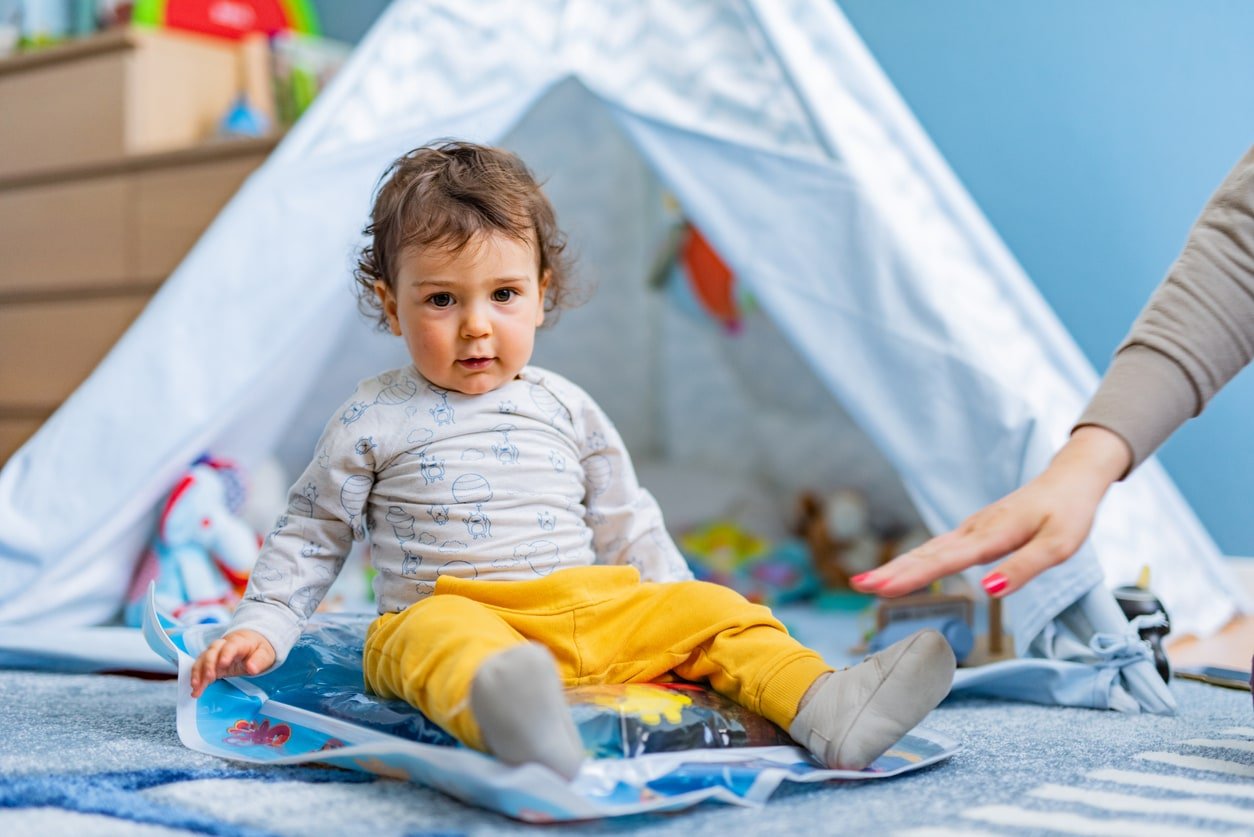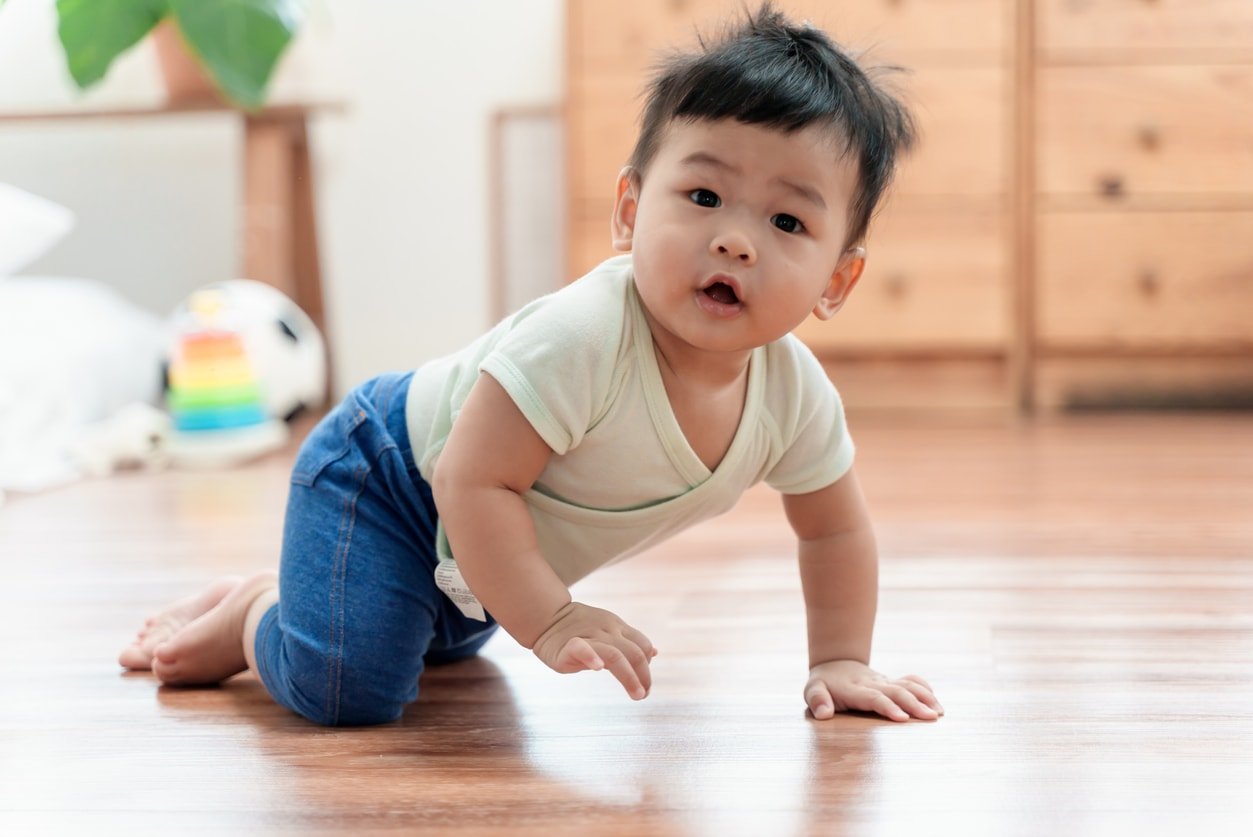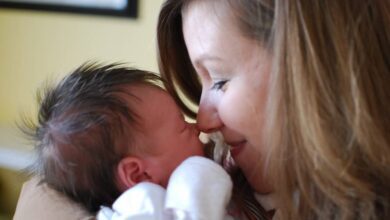When Do Babies Sit Up? What You Need To Know

Sitting is a monumental rite of passage for the baby and their parents. For many, it is a sign of freedom and growth. My babies are most content when they can sit up by themselves. They can look around and observe their surroundings or have their hands free playing with toys. As one of the first major gross motor developmental milestones, sitting up is something to be encouraged and looked forward to with the baby.1 You may be eager to get the baby to sit up but not sure when to expect this milestone, specifically at what age babies sit up. You may also wonder how to help them achieve this and what to do if they are not there if you think it should be. Here, we’ll explore all that and more as we answer the question, “When do babies start sitting up on their own?”
So, at what age do babies sit up on their own? Your baby should be able to sit in a supported chair by 6 months. This can be in a tripod sitting position, where they sit by leaning forward on their hands. It can also mean that you support them from behind or from the sides by holding them or making sure they don’t fall.2
According to the CDC, your baby should be sitting unsupported by 9 months. At this age, your baby should also be able to sit up without help.3
In a large study of gross motor development, all infants achieved sitting without support around 9 months. The youngest baby to sit without support was less than 4 months old, and the oldest baby to sit was 9 months. The average age of the babies in this study who sat without support was 6 months old.1
Before sitting up, your baby needs head control and core strength to hold himself upright. Signs of improving head control and core strength include actions such as:4
If your baby has mastered these skills, these may be signs that he is ready to start trying to sit up.
The baby’s strength develops from the top down, moving from head to toe. The first form of baby sitting is the tripod sitting position. In this position, their hands are held up between their spread legs.4
Eventually, as posture and strength develop, babies learn to sit without the support of their hands, but they are still working on balance and stability. They often have to catch themselves and can still fall over often.4
The last stage of sitting is the most stable — at this point, babies can balance even turn, turn the head, and move the arms.4 I remember realizing that I no longer had to worry about my baby knocking my baby over from a sitting position because he had finally mastered balancing while sitting!

Here are some tips and tricks to help your child practice sitting.
At my daughter’s four-month appointment, because she was rolling over and lifting her head at tummy time, our pediatrician encouraged me to help my baby start sitting up. She suggested sitting on the floor behind her with my legs in the shape of a V, thus supporting her from the back and the side. I also put his hands on the floor so he can learn to support himself while sitting on the tripod.
To provide support, you can also place your baby in a sitting position and keep your hands around their body or ribs to hold them. They will eventually learn to balance using their core or lean on one or both hands while looking around and playing with toys.2
Before my daughter could sit up without support, I was sitting her up with a C-shaped nursing pillow behind her. I would sit across from him or put toys in front of him, encouraging him to play with me while sitting and balancing. This encouraged him to sit up and gave me peace of mind that he wouldn’t fall and hit his head on the floor.
I suspect, in some ways, it may have backfired. The pillow began to act as a safety net — he knew it was there and would purposely throw himself straight back into it from a sitting position. I’m sure he developed core strength from basically doing sit-ups from the Boppy pillow, but he had to learn the hard way (by falling) that the pillow wasn’t always there when he learned how to sit and balance without support!
Some studies have shown a positive relationship between tummy time and faster gross motor development. Babies who practice more tummy time achieve sitting (both supported and independent), crawling, and pulling to stand at an earlier age.5
Exercise and Massage

In cultures that practice exercise and infant massage, infants are seated at a younger age on average. Parents are so confident in their stability that they move away from their baby when they are sitting.4
Although support from parents can help, baby sit-up seats do not help a baby learn to sit up independently. It may seem counterintuitive, but these baby carriers do not properly distribute a baby’s weight and put undue pressure on their back and hips. These seats also restrict a baby’s movement and teach them to rely on the support of these “seats”. Furthermore, being confined to a baby sit-up seat freezes a baby’s joints and prevents their muscles from getting stronger.6

So you’ve limited your baby’s time in containers, practiced lots of tummy time, provided endless support (literally!), and worked hard to get your baby to sit up. Once they’ve mastered this skill, you’re probably wondering what happens next. Sitting up is usually the next major gross motor milestone after rolling over.4 It begins a cascade of strength, growth, and movement in the first 12 to 18 months of your baby’s life. Once they start sitting up, other motor milestones can quickly follow.1
A study of infant motor development showed that gross motor milestones follow a predictable sequence about 90% of the time. The following milestones to look out for after sitting include:1
Baby’s motor milestones after sitting usually occur in the order listed above, but sometimes, crawling and standing with support can be interchanged.1
If your baby doesn’t meet these milestones or you’re worried, don’t hesitate to get help. No one knows your baby better than you! Do your gut and always seek an exam from a trusted provider if you’re concerned that your baby may not be reaching important motor milestones. If your baby used to meet a milestone but stopped taking that action, it’s also worth investigating.2
Your pediatrician should be able to perform a developmental screening and refer you to a specialist if necessary. It’s okay to get a second opinion if your pediatrician isn’t concerned, but you’re still concerned. You can also often make appointments with an infant physical therapist without a referral from a doctor. Finally, you can call your state early intervention program for a review and eligibility. Therapy can make a big difference, especially when started early.2
My second daughter is at the end of “normal” for sitting up and crawling. Her pediatrician assured me she wasn’t worried but gave me a physical therapy referral anyway. He reminded me that I know my baby. I’m not worried that he won’t meet these milestones; however, I am interested in pursuing therapy to learn how to better help him achieve these goals and catch up with his peers.
In the time leading up to the appointment, we started practicing more supported sitting and motivation through play. Ironically, he started sitting up on his own and the army crawled in a few days before his physical therapy appointment, so I canceled it. However, I still remember our pediatrician making me feel heard, supported, and validated.
It can be emotional when your baby starts to sit up! They always seem younger when they start sitting. As sweet as your baby’s learning to sit up is, it’s also an exciting milestone. This allows them to play with toys and see more of the world around them. There’s a lot you can do to encourage sitting, and if you’re concerned about a developmental delay, your pediatrician is a great resource for further assessment. With the right encouragement and interventions, your baby will be sitting (crawling, standing, and walking!) in no time.





